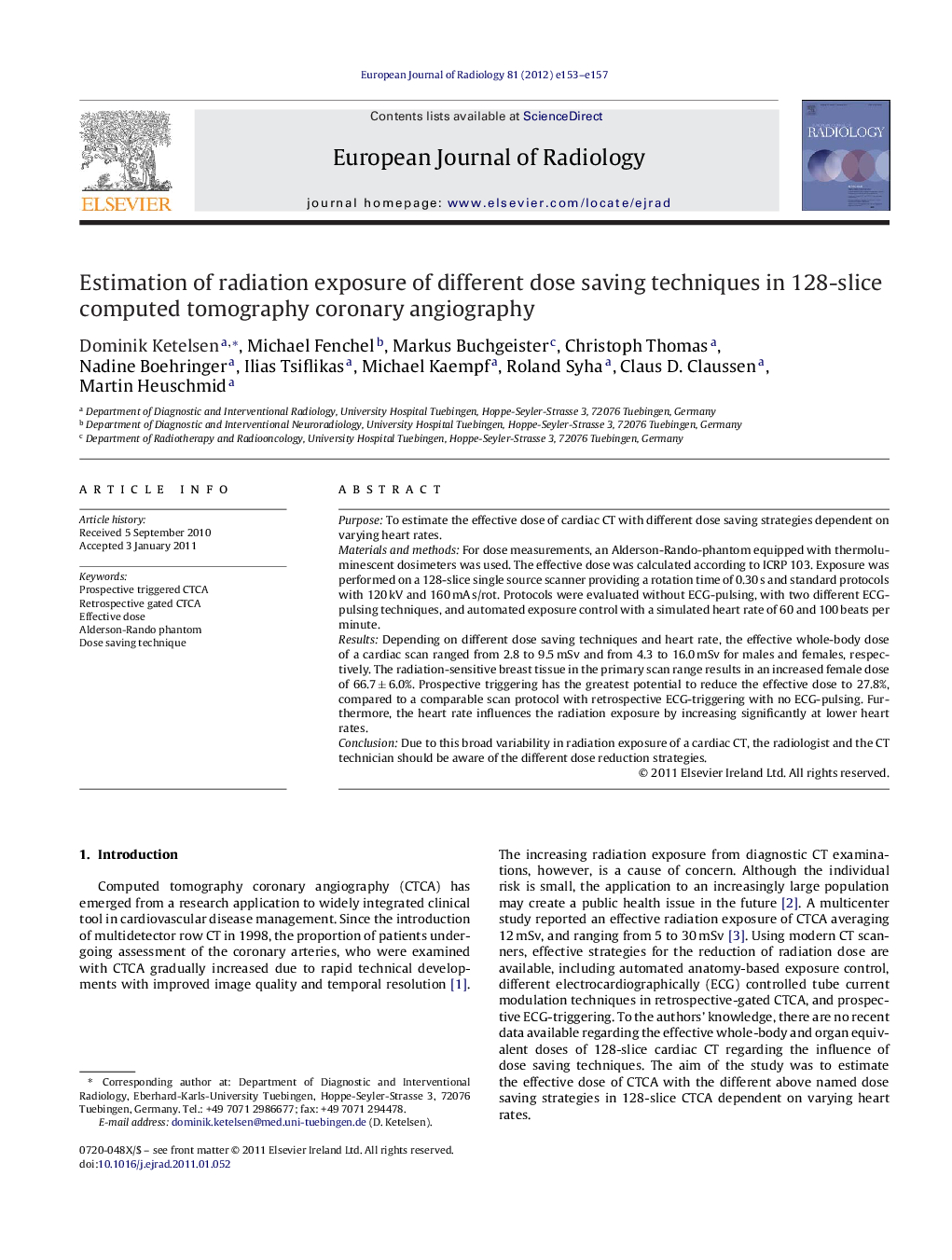| Article ID | Journal | Published Year | Pages | File Type |
|---|---|---|---|---|
| 4225991 | European Journal of Radiology | 2012 | 5 Pages |
PurposeTo estimate the effective dose of cardiac CT with different dose saving strategies dependent on varying heart rates.Materials and methodsFor dose measurements, an Alderson-Rando-phantom equipped with thermoluminescent dosimeters was used. The effective dose was calculated according to ICRP 103. Exposure was performed on a 128-slice single source scanner providing a rotation time of 0.30 s and standard protocols with 120 kV and 160 mA s/rot. Protocols were evaluated without ECG-pulsing, with two different ECG-pulsing techniques, and automated exposure control with a simulated heart rate of 60 and 100 beats per minute.ResultsDepending on different dose saving techniques and heart rate, the effective whole-body dose of a cardiac scan ranged from 2.8 to 9.5 mSv and from 4.3 to 16.0 mSv for males and females, respectively. The radiation-sensitive breast tissue in the primary scan range results in an increased female dose of 66.7 ± 6.0%. Prospective triggering has the greatest potential to reduce the effective dose to 27.8%, compared to a comparable scan protocol with retrospective ECG-triggering with no ECG-pulsing. Furthermore, the heart rate influences the radiation exposure by increasing significantly at lower heart rates.ConclusionDue to this broad variability in radiation exposure of a cardiac CT, the radiologist and the CT technician should be aware of the different dose reduction strategies.
